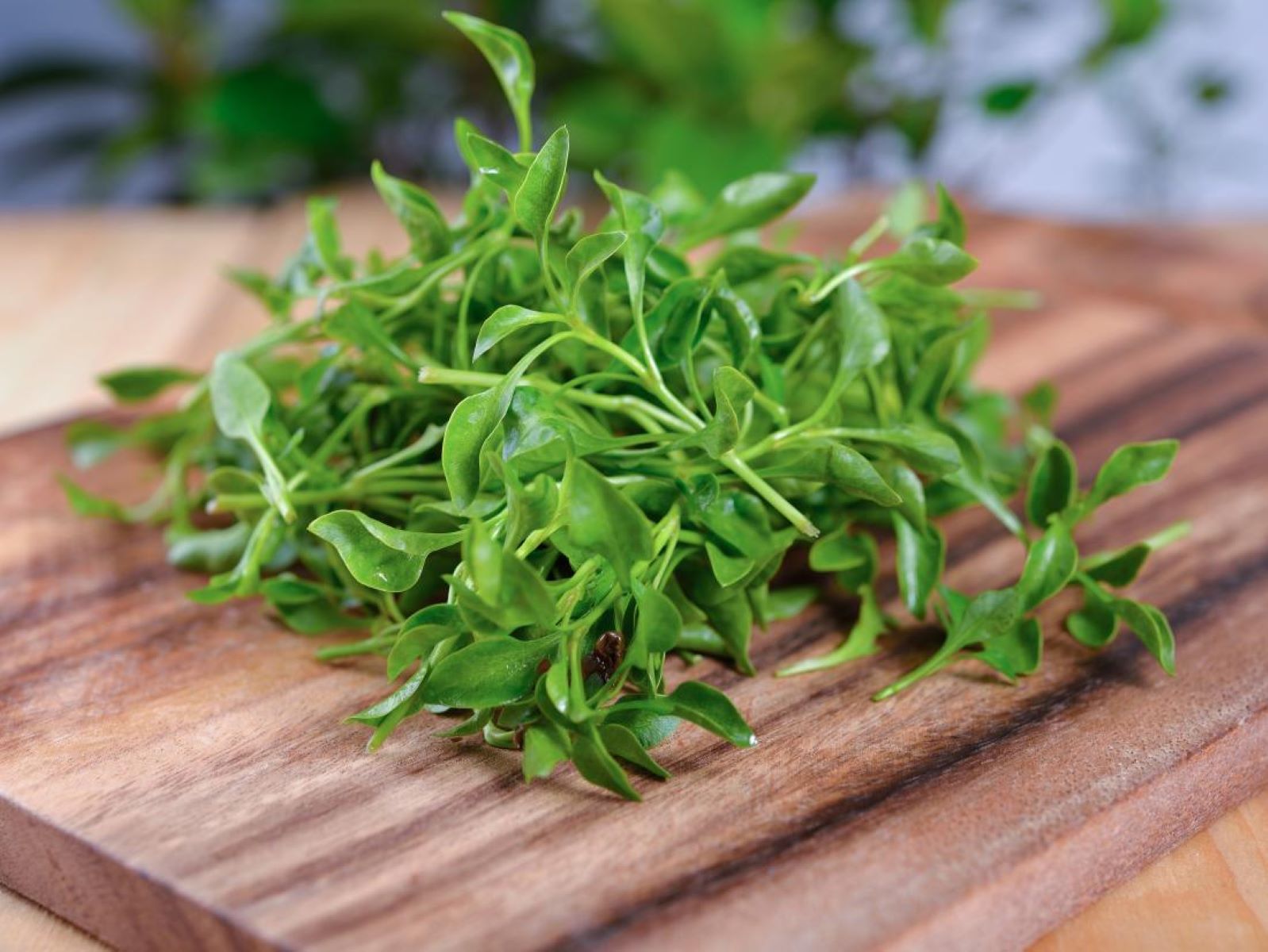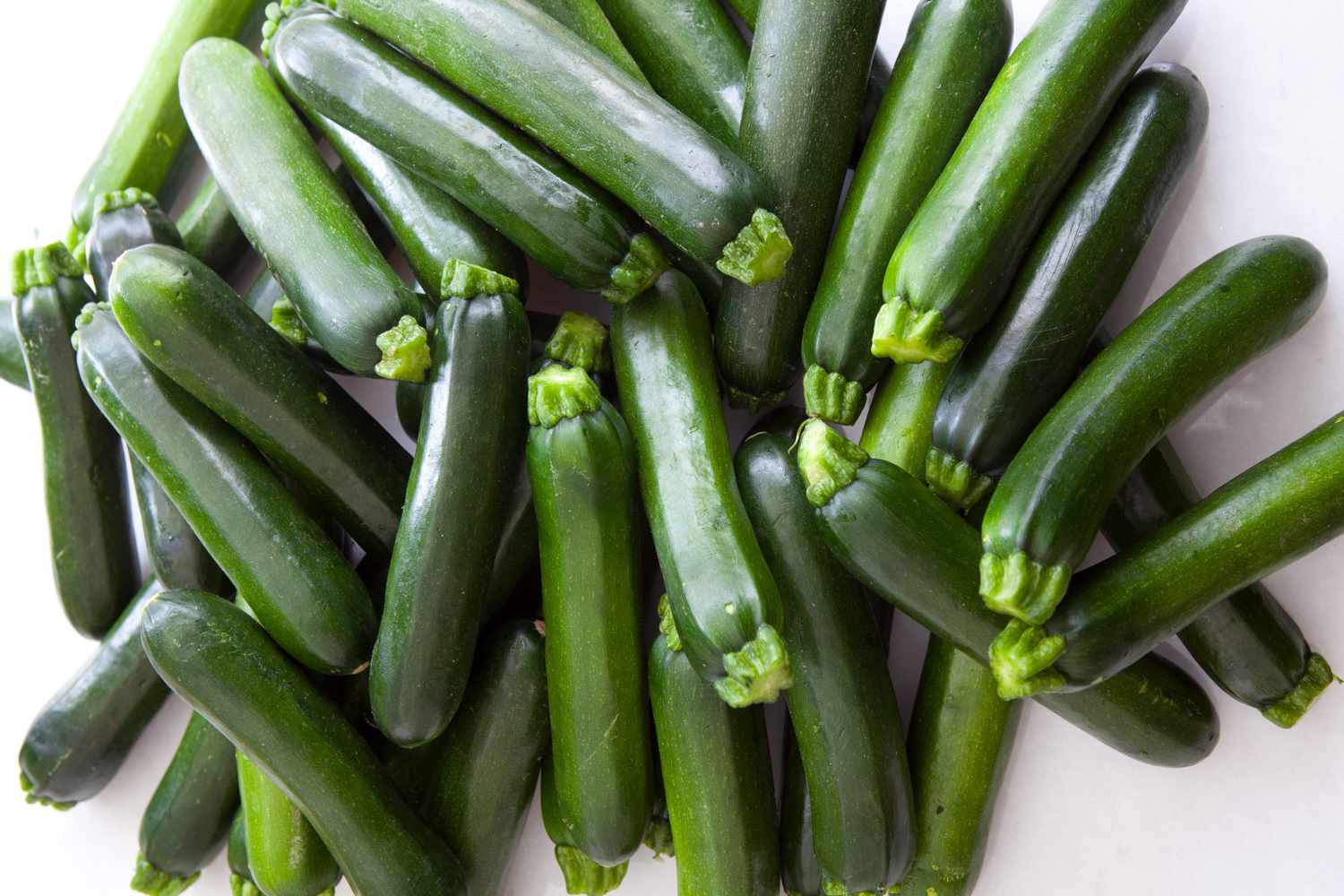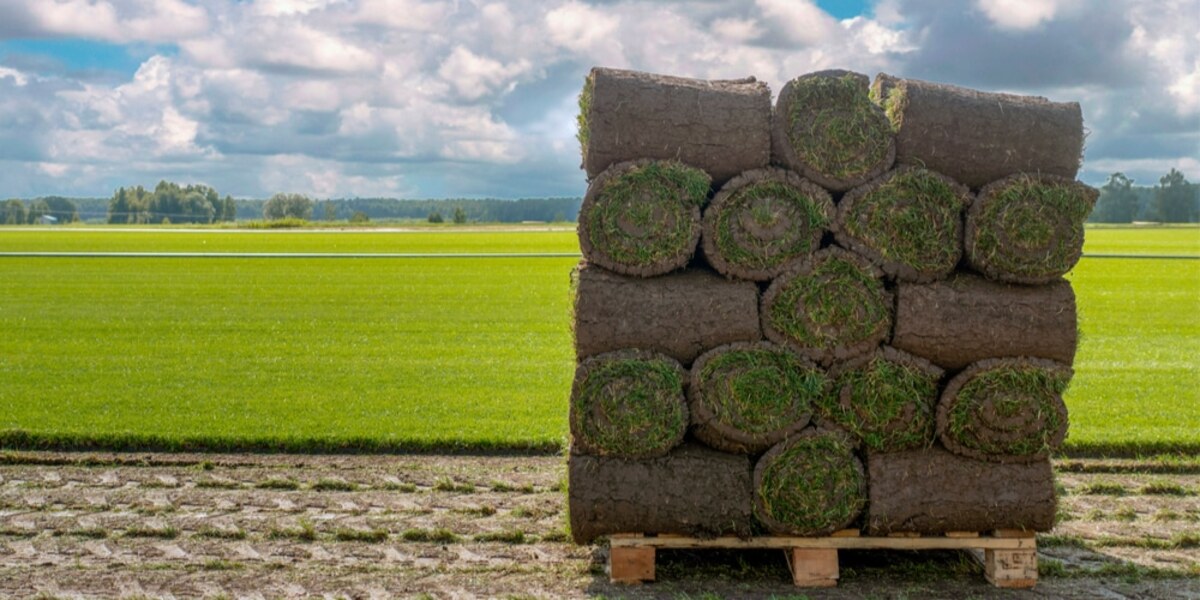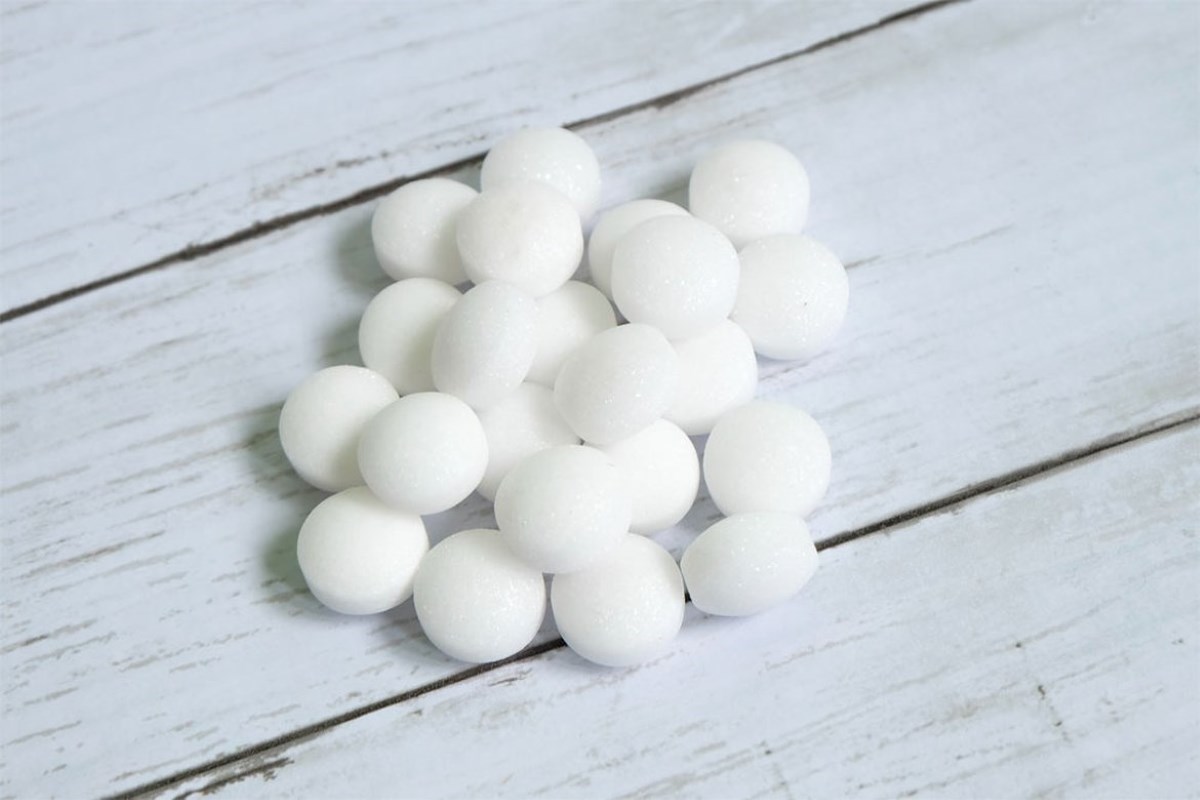

Articles
How To Store Watercress
Modified: December 7, 2023
Looking for articles on how to store watercress? Discover effective tips to keep your watercress fresh and flavorful for longer periods.
(Many of the links in this article redirect to a specific reviewed product. Your purchase of these products through affiliate links helps to generate commission for Storables.com, at no extra cost. Learn more)
Introduction
Watercress is a versatile leafy green vegetable that is packed with essential vitamins, minerals, and antioxidants. Its refreshing and peppery flavor makes it a favorite ingredient in salads, sandwiches, soups, and even smoothies. If you want to enjoy the benefits of watercress year-round, learning how to properly store it is key.
In this article, we will guide you through the process of storing watercress to maintain its freshness and quality for as long as possible. Whether you’ve grown your own watercress or purchased it from a local market, these storage tips will help ensure that you can enjoy its delicious taste and nutritional benefits whenever you want.
Proper storage not only extends the shelf life of watercress but also helps retain its vibrant green color, crisp texture, and peppery taste. By following the steps outlined in this article, you will be able to keep your watercress fresh and flavorful for longer periods of time.
So, let’s delve into the world of watercress storage and discover how to make the most of this nutrient-packed green.
Key Takeaways:
- Store watercress in the refrigerator by wrapping it in damp paper towels and placing it in a plastic bag to maintain freshness for up to a week. Check and refresh regularly for best results.
- Extend the shelf life of watercress by freezing, drying, or using specialized storage methods like vacuum sealing and herb keepers. Enjoy its vibrant flavors in salads, sandwiches, soups, and more.
Read more: How To Plant Watercress Seeds
Why Store Watercress?
While watercress is best enjoyed when freshly harvested, there are several reasons why you might want to store it for later use:
- Extended Availability: Watercress has a relatively short growing season, typically from late spring to early summer. By storing watercress, you can enjoy its flavors and nutritional benefits even when it is out of season.
- Convenience: Having a stash of stored watercress allows you to easily incorporate it into your meals without having to make a special trip to the grocery store or farmers market.
- Cost Savings: Buying watercress when it is in season and abundant allows you to take advantage of lower prices. By storing it properly, you can enjoy the savings throughout the year.
- Food Preservation: If you have a surplus of watercress that you don’t want to go to waste, storing it properly allows you to preserve its freshness and flavor.
By understanding the benefits of storing watercress, you can make the most of its availability, convenience, cost savings, and food preservation advantages. With the right storage techniques, you can enjoy watercress whenever you want, regardless of the season.
Choosing Watercress for Storage
When it comes to storing watercress, selecting the right quality of watercress is crucial to ensure that it stays fresh for an extended period. Here are a few tips to help you choose the best watercress for storage:
- Look for Freshness: Choose watercress with vibrant green leaves and crispy stems. Avoid any bunches that have yellowing or wilted leaves, as they indicate that the watercress is past its prime.
- Avoid Damaged Leaves: Check the watercress carefully for any signs of damage or bruising. Damaged leaves are more prone to spoilage, so it’s best to choose bunches with intact and healthy leaves.
- Check for Cleanliness: Ensure that the watercress is clean and free from dirt and debris. Look for bunches that have been properly washed and packaged.
- Consider Organic Options: If possible, opt for organic watercress to avoid exposure to pesticides and chemicals. Organic watercress is grown without the use of synthetic fertilizers or pesticides, making it a healthier choice.
By selecting fresh, undamaged, and clean watercress, you are setting yourself up for successful storage. Remember that the quality of the watercress at the time of purchase will greatly impact how long it stays fresh during storage.
Once you have chosen the best watercress, it’s time to move on to the next step: harvesting and preparing it for storage.
Harvesting Watercress
Harvesting watercress is a straightforward process that ensures you have the freshest greens for storage. Here’s how to harvest watercress:
- Timing: Harvest watercress in the morning when the plants are well-hydrated and the temperatures are cooler. This helps preserve its crispness and flavor.
- Tools: Use a pair of clean, sharp scissors or garden shears to cut the watercress stems just above the soil level.
- Trimming: Trim off any yellowing or damaged leaves from the watercress bunch, as they can affect the overall quality and storage life.
- Quantity: Harvest only the amount of watercress that you need or can store properly. This helps prevent waste and ensures that the harvested watercress remains fresh.
- Leave Some Growth: When harvesting watercress, leave a few inches of the plant behind to allow it to regrow for future harvests.
Remember, watercress is a semi-aquatic plant that thrives in water. If you have access to a water source, consider growing watercress in a container or a garden bed. This allows for continuous harvesting and guarantees the freshest supply of watercress whenever you need it.
Once you have harvested your watercress, it’s time to move on to the next crucial step: cleaning the watercress to remove any dirt or debris.
Cleaning Watercress
Properly cleaning watercress is essential to remove any dirt, debris, or potential contaminants. Follow these steps to clean your watercress:
- Separate the Bunch: Start by separating the watercress bunch into individual stems. This will allow for a thorough cleaning process.
- Rinse: Rinse the watercress under cool running water. Gently swish the leaves to dislodge any dirt or debris that may be trapped in the clusters.
- Inspect for Pests: While rinsing, inspect the watercress for any pests such as insects or eggs. Remove any unwanted visitors before proceeding.
- Submerge in Water: Fill a large bowl or basin with fresh water. Submerge the watercress stems into the water, allowing any remaining dirt to sink to the bottom.
- Gently Agitate: Gently agitate the watercress stems in the water with your hands to help loosen any dirt or impurities.
- Drain: Lift the watercress stems out of the water and transfer them to a colander or clean towel to drain the excess water.
- Pat Dry: Gently pat the watercress dry with a clean kitchen towel or paper towels. Be sure to remove any excess moisture to prevent wilting and decay.
Once the watercress is cleaned and dry, it is ready to be stored using one of the recommended methods: refrigeration, freezing, or drying.
Proper cleaning is crucial not only for removing dirt but also for minimizing the risk of foodborne illnesses. By taking the time to clean your watercress thoroughly, you can enjoy a safe and delicious supply of fresh greens.
Read more: How To Store Store-Bought Bread
Storing Watercress in the Refrigerator
One of the easiest and most common methods for storing watercress is in the refrigerator. By following these steps, you can keep your watercress fresh and crisp for a longer period:
- Wrap in Damp Paper Towels: Start by gently wrapping the watercress bunch in damp paper towels. The moisture helps to maintain the crispness of the leaves and prevent wilting.
- Place in a Plastic Bag: Once wrapped, transfer the watercress to a resealable plastic bag. Press out any excess air and seal the bag tightly.
- Adjust Temperature: Set your refrigerator to a temperature between 35°F to 40°F (1.7°C to 4.4°C) to maintain optimal freshness.
- Store in the Crisper Drawer: Place the bag of watercress in the crisper drawer of your refrigerator. This drawer helps regulate humidity levels and provides a stable environment for the greens.
- Check and Refresh: Check on the watercress regularly, removing any wilted or yellowed leaves. If the paper towels become dry, dampen them slightly to maintain the moisture.
When stored properly in the refrigerator, watercress can stay fresh for up to a week. However, it’s best to consume it as soon as possible for the best flavor and quality.
Note: If you have harvested watercress from your garden, storing it in the refrigerator is the recommended option. However, if you have a large quantity of watercress that you won’t be able to use within a week, consider freezing or drying it for longer-term storage.
Now that you know how to store watercress in the refrigerator, let’s explore other methods of preserving its freshness.
Store watercress in the refrigerator. Place the stems in a glass of water, cover with a plastic bag, and change the water every few days to keep it fresh.
Freezing Watercress
Freezing watercress is an excellent option if you want to extend its shelf life beyond a week. While freezing may slightly alter the texture of watercress, it allows you to enjoy its flavor and nutritional benefits for several months. Here’s how to freeze watercress:
- Blanching: Start by blanching the watercress to preserve its color, texture, and flavor. Bring a pot of water to a boil and prepare an ice bath by filling a bowl with cold water and ice cubes.
- Prepping the Watercress: Remove any tough stems or thick parts of the watercress. Rinse the leaves thoroughly and pat them dry.
- Blanching Time: Submerge the watercress in the boiling water for about 30 to 60 seconds, depending on the thickness of the leaves.
- Cooling Process: Immediately transfer the blanched watercress to the ice bath to stop the cooking process and cool it rapidly. Leave it in the ice bath for the same amount of time it was in boiling water.
- Draining: Remove the watercress from the ice bath and drain well to remove excess moisture.
- Portioning: Divide the blanched and drained watercress into portions that suit your future usage. Whether you prefer small bundles or individual servings, portioning makes it easier to thaw only what you need.
- Freezing: Place the portioned watercress into resealable freezer bags or airtight containers. Squeeze out as much air as possible and seal tightly.
- Labeling: Don’t forget to label your freezer bags or containers with the date of freezing to keep track of freshness.
- Freezer Placement: Lay the bags or containers flat in the freezer to allow for easy stacking and to prevent any damage.
Frozen watercress can be stored in the freezer for 8 to 12 months. Remember to thaw only the amount you need and use it in cooked dishes such as soups, stews, stir-fries, or sauces, as freezing can soften the texture of the leaves.
Now that you know how to freeze watercress, let’s explore another method of storage: drying.
Drying Watercress
Drying watercress is a fantastic way to preserve its flavors while also creating a versatile ingredient that can be used in various dishes. Here’s how you can dry watercress:
- Washing: Start by washing the watercress thoroughly to remove any dirt or debris. Pat it dry gently using a clean kitchen towel or paper towels.
- Prepping: Remove any tough stems or damaged leaves from the watercress bunch. Keep the leaves intact for the drying process.
- Air Drying: Bundle the watercress stems together and tie them with a string. Hang the bundles upside down in a well-ventilated area. Make sure to choose a spot away from direct sunlight.
- Avoiding Contamination: To prevent dust or insects from settling on the drying watercress, cover the bundles with a paper bag or muslin cloth.
- Drying Time: It can take anywhere from 1 to 2 weeks for the watercress to fully dry. The leaves should be crisp and brittle to the touch.
- Storing: Once the watercress is completely dry, remove the leaves from the stems. Store the dried leaves in an airtight container or a resealable bag.
Dried watercress can be stored in a cool, dry place for several months. It can be used in a variety of dishes such as soups, stews, teas, herbed salts, or even ground into a powder for seasoning.
Remember, the flavor of dried watercress will be more concentrated, so use it sparingly and adjust the amount based on your taste preferences.
Now that you know how to dry watercress, let’s discuss how to store watercress for an extended shelf life.
Storing Watercress for Extended Shelf Life
If you want to store watercress for an extended period, there are a few additional techniques you can use to maximize its shelf life. Here are some methods:
- Vacuum Sealing: Consider using a vacuum sealer to remove all the air from the packaging. By eliminating oxygen, you can significantly slow down the deterioration process and extend the freshness of the watercress.
- Herb Keeper: Invest in a specialized herb keeper or storage container designed to prolong the shelf life of herbs and leafy greens. These containers provide the optimum conditions, such as controlled humidity, to keep watercress fresh for longer.
- Hydroponic Storage: If you have access to hydroponic systems or containers designed for storing leafy greens, they can be an excellent option for extending the shelf life of watercress. These systems provide the perfect environment to keep the watercress fresh and crisp.
- Reviving Wilted Watercress: If your watercress starts to wilt, you can revive it by giving it a refreshing cold water bath. Submerge the stems in a container of cold water for a few minutes, and it will help rejuvenate the leaves and restore their crispness.
While these methods can help extend the shelf life of watercress, it’s important to note that the freshest and best-tasting watercress is always consumed within a week of harvest. However, if you follow these storage techniques, you may be able to enjoy the freshness of watercress for an extended period.
Remember to regularly inspect stored watercress for any signs of spoilage or degradation. Discard any wilted, yellowed, or slimy leaves to prevent the spread of spoilage to the rest of the batch.
Now that you know how to store watercress for an extended shelf life, let’s explore all the delicious ways you can use your stored watercress.
Read more: How To Store Basil From Grocery Store
Using Stored Watercress
Now that you have successfully stored your watercress, it’s time to unleash its vibrant flavors and nutritional goodness in various culinary creations. Here are some creative and delicious ways to use your stored watercress:
- Salads: Add a handful of freshly chopped watercress to your favorite salad for an extra peppery crunch. It pairs well with citrus fruits, creamy cheeses, nuts, and light vinaigrettes.
- Sandwiches and Wraps: Layer watercress leaves onto sandwiches, wraps, or burgers for a refreshing and nutritious twist. It adds a delightful crunch and a hint of spiciness.
- Smoothies: Incorporate watercress into your smoothies for an added boost of vitamins and antioxidants. It pairs well with fruits like apples, pears, and pineapple.
- Soups and Stews: Toss some chopped watercress into your homemade soups and stews for a pop of flavor and a nutritious boost. It works particularly well in delicate vegetable or chicken broths.
- Sautéed Dishes: Sauté watercress with garlic, olive oil, and a pinch of salt and pepper. It makes a fantastic side dish or a topping for grilled meats and seafood.
- Herbal Infusions: Use dried watercress leaves to create herbal infusions by steeping them in hot water. Add a twist of lemon or a drizzle of honey for a refreshing and nourishing beverage.
- Pesto and Sauces: Blend watercress with garlic, nuts, olive oil, and Parmesan cheese to create a flavorful watercress pesto. It can be used as a spread, a pasta sauce, or a marinade.
Get creative in the kitchen and experiment with using watercress in various dishes. Its unique flavor profile adds a refreshing and vibrant twist to any recipe.
Remember, whether you are using fresh, frozen, or dried watercress, adjust the amount based on your taste preferences and the intensity of the flavor. Start with small amounts and gradually increase to find the perfect balance for your palate.
Enjoy the versatility of your stored watercress and savor the delightful flavors it brings to your favorite dishes.
To conclude, we have covered the essential steps for storing watercress, from choosing the best bunch to proper storage methods. By following these guidelines, you can enjoy the nutritional benefits and peppery taste of watercress year-round.
So, make the most of your watercress, get creative in the kitchen, and elevate your culinary creations with this vibrant and nutritious leafy green.
Conclusion
Watercress, with its refreshing taste and exceptional nutritional profile, is a valuable addition to any diet. By learning how to properly store watercress, you can enjoy its flavors and benefits long after the growing season ends.
In this article, we explored various methods of storing watercress, including refrigeration, freezing, and drying. Each method offers its own advantages in terms of shelf life and versatility in culinary applications.
When storing watercress, it is essential to start with fresh and high-quality bunches. Properly cleaning the watercress removes any dirt or impurities, while careful harvesting helps maintain its quality.
If you choose to store watercress in the refrigerator, wrapping it in damp paper towels and placing it in a plastic bag will help keep it fresh for up to a week. Freezing watercress requires blanching and portioning, allowing you to enjoy its flavors for up to a year. Drying watercress is a great way to have a longer-lasting supply, creating a versatile ingredient for various culinary creations.
Additionally, we explored techniques for extending the shelf life of watercress, such as vacuum sealing, herb keepers, and hydroponic storage. These methods can further enhance the longevity and freshness of your watercress.
Once you have stored your watercress, the possibilities for using it are endless. Whether in salads, sandwiches, soups, or smoothies, the peppery flavor of watercress adds a delightful twist to your favorite dishes.
Remember to adjust the amount of watercress used based on your taste preferences and the intensity of the flavor. And don’t forget to regularly check your stored watercress for any signs of spoilage to ensure you are consuming it at its prime.
In conclusion, by understanding how to properly store watercress, you can enjoy this nutritious and delicious leafy green throughout the year. So, go ahead and experiment in the kitchen, incorporating watercress into your favorite recipes and discovering new culinary delights.
Get started on your watercress storage journey and savor the freshness and vibrant flavors of this remarkable leafy green!
Frequently Asked Questions about How To Store Watercress
Was this page helpful?
At Storables.com, we guarantee accurate and reliable information. Our content, validated by Expert Board Contributors, is crafted following stringent Editorial Policies. We're committed to providing you with well-researched, expert-backed insights for all your informational needs.














0 thoughts on “How To Store Watercress”